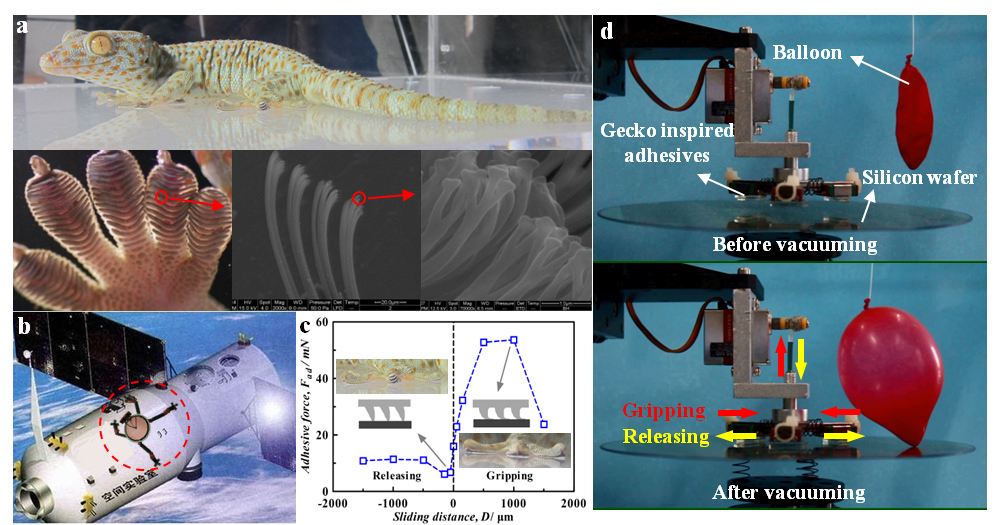On April 7th, 2017, Prof. Yu Tian and Prof. Yong Li from the State Key Laboratory of Tribology, Department of Mechanical Engineering at Tsinghua University published a research article entitled with "Controllable Anisotropic Dry Adhesion in Vacuum: Gecko Inspired Wedged Surface Fabricated with Ultraprecision Diamond Cutting" in Advanced Functional Materials. This research demonstrates a green, high-yield, and low-cost method to fabricate a reliable and durable mold for gecko inspired anisotropic dry adhesive surfaces and the potential application of dry adhesive surfaces in vacuum.
Geckos have remarkable climbing capability on various surfaces in nature, which has been described long time ago, such as by Aristotle (384 BC?322 BC). The hierarchical structures on gecko toes were found to be the secret of the exceptional climbing capability. The intermolecular van der Waals interaction between the setae on gecko toe and the walls plays a major role in gecko adhesion. Through gripping in and out of its toes, gecko can achieve a flexible control of the ON–OFF adhesion. Due to the characteristics of van der Waals interactions, which exists between any two surfaces of materials and regardless of the surrounding environment, applications of gecko inspired surfaces could be reasonably expanded to vacuum and even space environment.

(a) A gecko body and the hierarchical structures on its toes;(b)Inspection robot (in the red circle) using gecko inspired adhesive feet outside the spacecraft (an artist concept); (c) Influence of sliding direction and sliding distance on adhesion of the wedge-structured gecko inspired adhesives in vacuum; (d) Demonstration of the gecko inspired gripper manipulating the silicon wafer in vacuum.
Formerly, the fabrication of gecko inspired surfaces is mostly chemistry related and could be classified into two types: (i) etching and casting, namely casting the polymer into an etched mold and then demolding; (ii) gas phase growth, such as CVD growth of nanotube or nanowire arrays. However, these methods are complicated, low-yield and high-cost, which hinder the applications of the gecko inspired surfaces in engineering. Therefore, Prof. Yu Tian et al. proposed an ultraprecision diamond cutting based method to fabricate the molds of wedge-structured gecko inspired surfaces. Through a simple demolding process, the gecko inspired surface with fine wedged structures could be achieved. Based on the flexible control of the adhesion and friction of the wedge-structured gecko inspired surfaces, a gecko inspired gripper successfully demonstrated the picking up, holding, and releasing of silicon wafers both under atmospheric conditions and in vacuum.
Prof. Yu Tian is the corresponding author. Ph.D student Dashuai Tao is the first author. This work was supported by the National Natural Science Foundation of China and the Beijing Natural Science Foundation.
The original link: http://dx.doi.org/10.1002/adfm.201606576


